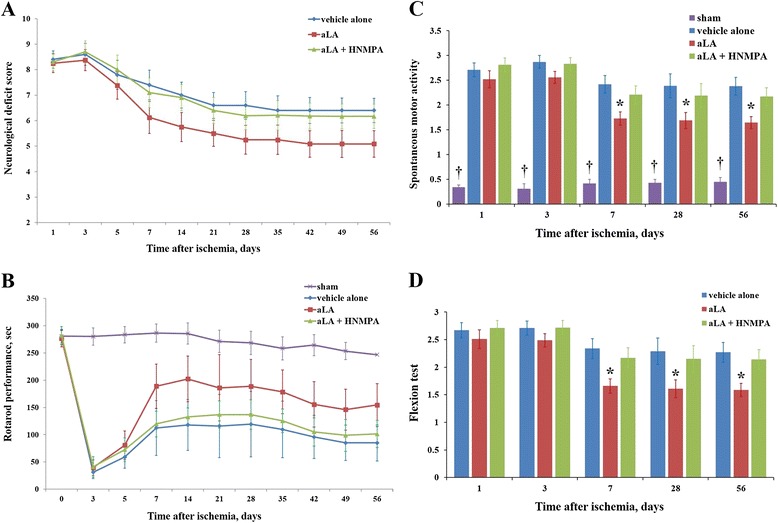Figure 4.

The effect of alpha-lipoic acid (aLA) on functional recovery. (A) The initial neurological deficit score (NDS) following ischemic stroke was similar for three groups. After treatment with aLA, the NDS was significantly different, with the lowest scores observed for the aLA group (5.09 ± 0.52) when compared with the control group (6.41 ± 0.48, P = 0.001; ANOVA with repeated measures). (B) Artificial occlusion of the MCA resulted in severe impairments in the rotarod performance test. Postoperative motor function in the rotarod test was significantly improved by aLA treatment when compared with the control group (P = 0.013; ANOVA with repeated measures). (C) In the spontaneous motor activity (SMA) test, there was a marked decrease (*P < 0.05; †P < 0.01 as compared to the control; Kruskal-Wallis test) in behavioral efficiency in the ischemic group when compared with sham animals. aLA treatment significantly improved behavioral output. (D) In the flexion test, there was a marked improvement (*P < 0.05 as compared to the control; Mann–Whitney-U test) in the aLA group when compared with the control group. Data represents mean ± SEM (n = 20 in the aLA and control groups, n = 10 in the HNMPA and sham group).
